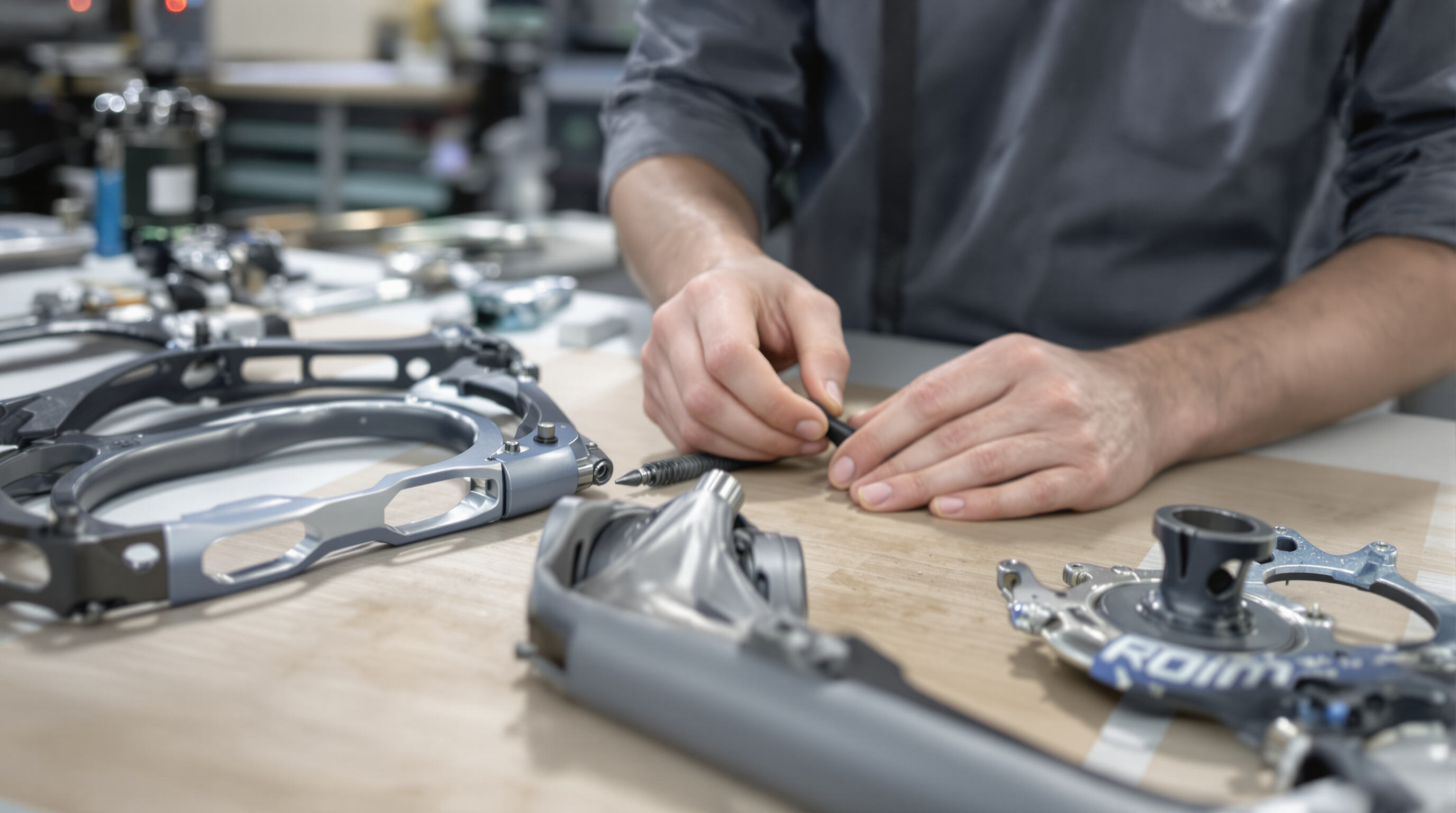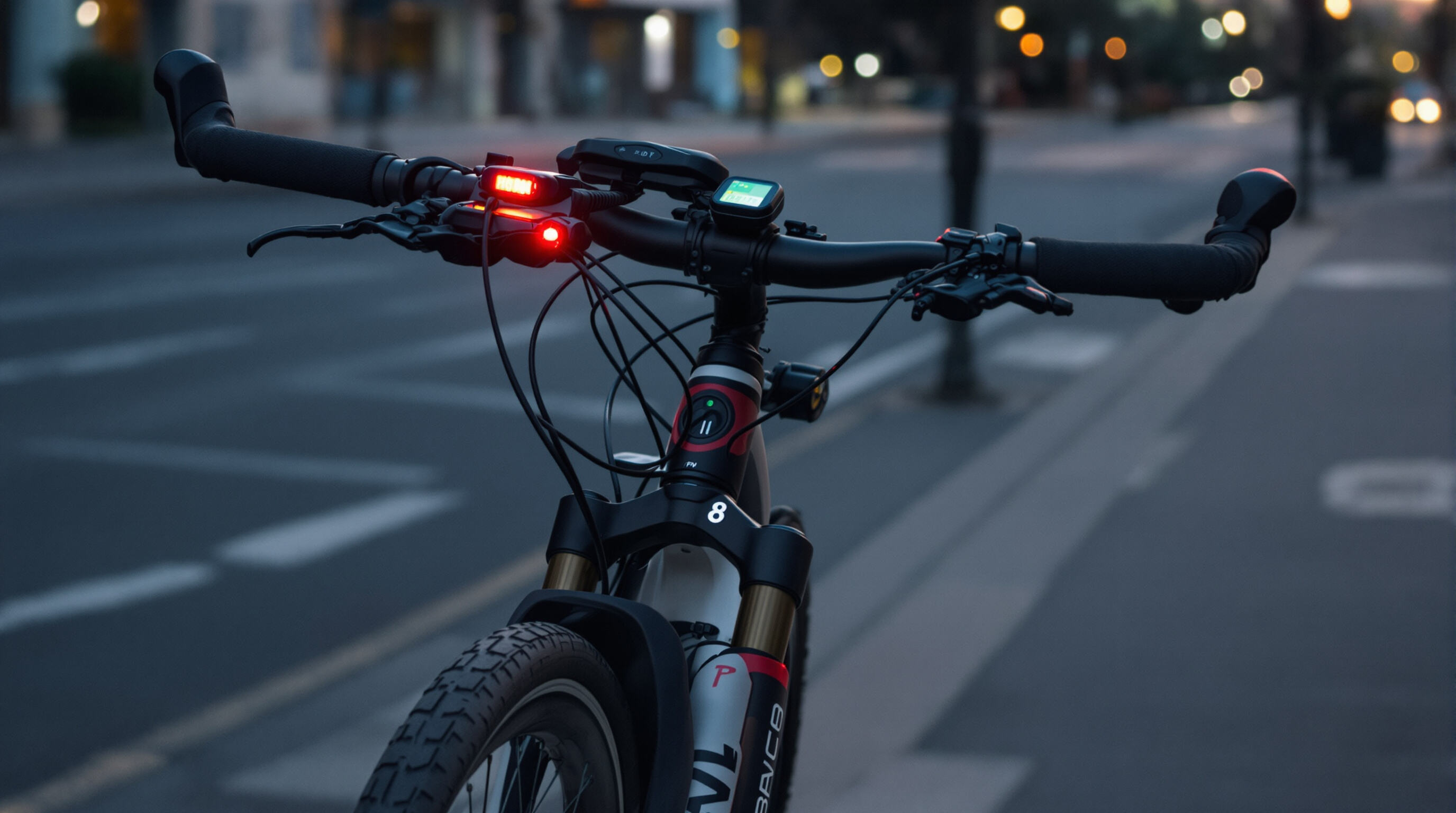According to Future Market Insights from 2025, the worldwide market for premium priced bike accessories should expand around 7.3 percent annually until 2035. This growth comes mainly from people wanting lighter parts packed with technology features. Look at what's happening in cities these days: smart gear like handlebars with built-in GPS tracking, self adjusting suspensions, and LED lights that connect to smartphone apps already account for nearly half of all after market buys. Companies buying in large quantities especially those outfitting office fitness initiatives or bike sharing services are starting to focus on products designed with modularity in mind. These kinds of designs make it much easier when something breaks down or needs an upgrade later on down the road.
More than two thirds of regular bike riders are looking for gear that tracks performance these days. They want things like power meters on their bikes and sensors to check tire pressure while riding. Makes sense when we look at how fast smart cycling equipment has grown over the past year, hitting about 26% increase compared to last year. People who care about staying fit really love being able to track their progress in real time during rides. For those folks who ride both city streets and trails, there's another trend happening too. Commuters need tough panniers that can handle everyday wear and tear from electric bikes, plus good security systems to keep bikes safe outside coffee shops. This means companies that offer longer warranty periods than what's standard in the market have a real chance to stand out among competitors.
The market is predicting that e-bikes will outsell regular bikes by 2028, which means manufacturers need to keep producing those big capacity batteries that charge fast around 90 minutes max, plus durable cargo racks that can handle over 25 kilograms worth of stuff, and lights that turn on automatically when someone starts moving. Take Amsterdam and Tokyo for instance where about one third of people heading into work every day now ride their electric bikes, numbers from the Global Bicycle Market Report from last year show this clearly. As these trends continue growing, companies buying in bulk have had to start looking at all sorts of different models just so they can find compatible parts and accessories that actually work together without issues.
By 2025, the premium bicycle accessories segment will exceed $24.9 billion, with composite materials and embedded sensors accounting for 60% of high-margin products. To capitalize, successful sourcing strategies will:
Bulk buyers optimizing these factors achieve 18â22% higher margins compared to traditional procurement models, as noted in the 2025 Premium Bicycle Market Report.

Carbon fiber and titanium dominate premium accessory manufacturing, delivering 18â22% weight reduction over aluminum while maintaining strength (Technavio 2025). These materials enable 35â50% price premiums on components like seatposts, handlebars, and electronic shifting mounts due to their vibration-dampening properties and aerodynamic efficiency.
Hydraulic disc brakes these days cut stopping distances down around 40% when roads get wet, which makes them pretty essential for anyone riding electric bikes in city traffic. Cargo bikes are starting to come with gearboxes that offer something like 600% range ratios now, especially helpful for folks who have to tackle hills regularly with heavy loads. The lighter weight of modern drivetrains is another big plus, giving riders more power per pedal stroke while also helping extend battery life between charges, so urban commuters can get further without worrying about running out of juice halfway home.
Bamboo-reinforced composites now match carbon fiberâs stiffness-to-weight ratio at 60% lower cost and with 53% fewer emissions during production (Carbon Bicycle Association 2024). Recycled carbon fiber patching extends component lifespans by 8â12 years, supporting circular economy goals and appealing to eco-conscious buyers.
A growing 34% of material suppliers now require quarterly R&D collaboration in contracts, up from 12% in 2021 (EBMA 2024). Top negotiators secure:
This strategy reduces supply chain disruptions by 29% while maintaining 15â18% gross margins on premium accessory lines.
Top-tier manufacturers achieve 18â24% supply chain cost reductions by streamlining logistics and using just-in-time production for bicycle accessory lines. Their supplier networks rely on multi-year contracts with staggered pricing, balancing volume commitments with flexibility to respond to market shifts.
Working with OEM partners can cut those initial tooling expenses down somewhere between 35 to maybe even 50 percent when compared to making everything internally according to recent manufacturing figures from 2024. But there's another angle here worth mentioning. Companies that have their own unique designs, take those special mounts for electronic gear shifting as an example, often see about 12 or so percent better profit margins because they maintain full control over how things get made. We're seeing this hybrid approach become pretty common these days. Around six out of ten large scale purchasers actually split their operations, relying on OEMs for standard components but keeping those patented technologies in house with vetted suppliers instead.
Working with Tier-2 material experts can actually cut down on accessory manufacturing expenses somewhere between 9 and 14 percent while still keeping product quality intact. A recent report from 2025 looking at materials across automotive and cycling industries shows something interesting too. Aluminum forging specialists based in Southeast Asia are now able to produce parts with aerospace grade CNC machining but charge around 22% less compared to what traditional Tier-1 suppliers typically ask for. What's even better? These kinds of collaborations tend to speed things up quite a bit during the prototype phase. Instead of waiting the usual 45 days industry wide, companies often get their prototypes ready within just 14 to 21 days. This faster turnaround means getting those premium priced items such as built-in bike computers or customizable cargo rack systems out there quicker than ever before.

Electronic shifting systems reduce mechanical adjustments by 85% compared to traditional setups (Future Market Insights 2025), enabling retailers to command 25â35% price premiums. Incorporating smart connectivityâsuch as automatic gear optimization based on terrain dataâadds proprietary value that differentiates offerings in a competitive market.
Connected accessories drive 40% of aftermarket revenue growth in cycling. IoT-enabled GPS trackers reduce urban theft by 62%, while smart lights with adaptive brightness improve night visibility by 57% (European Digital Innovation Council 2025). When sourcing for fleets, prioritize suppliers offering customizable APIs for integration with existing inventory and management systems.
Top companies are increasingly creating accessories controlled through apps that feature modular firmware for easy over the air updates. Take for instance motorcycle suspensions that automatically tweak their damping settings according to how much weight they sense on board, bike batteries getting regular efficiency improvements pushed remotely, and smart locks connecting to local security databases for better protection. Products built this way tend to last anywhere from three to five extra years in service life compared to older models. Customers who buy these kinds of items typically spend about 72 percent more over time than those stuck with non-upgradable versions, according to recent market analysis.
Urban and recreational cyclists increasingly seek comprehensive mobility solutions. A 72% revenue increase in non-core cycling products since 2022 (Globenewswire 2025) reflects strong demand for:
Distributors report 38% higher average margins on these add-ons by addressing real-world urban commuting challenges.
Strategic inventory planning should reflect buyer preferences:
| Core Cycling Accessories | Emerging Lifestyle Add-ons |
|---|---|
| High-performance saddles | Designer pannier bags |
| Aero handlebars | Integrated coffee carriers |
| Premium tire systems | Customizable frame decals |
Urban commuters allocate 41% of their cycling budgets to non-traditional accessories, compared to 18% among road cycling enthusiasts, according to the 2025 Urban Mobility Report.
Top distributors use tiered bundles to boost order value and reduce shipping costs:
This approach increases average order values by 27% through consolidated packaging and enhanced perceived value.
The growth is primarily driven by the demand for lighter parts with technology features, urban e-bike commuting, and smart cycling equipment that track performance.
Carbon fiber and titanium provide significant weight reduction while maintaining strength, enabling price premiums due to their vibration-dampening properties and aerodynamic efficiency.
Companies can achieve better margins by streamlining logistics, using Tier-2 supplier partnerships, and employing OEM manufacturing, while maintaining control over personalized designs.
Technology enhances value through electronic shifting, smart connectivity, IoT-enabled accessories, and app-integrated systems, resulting in increased service life and customer spending.
Companies can expand their offerings by addressing urban and recreational cycling needs with cargo systems, micro-mobility add-ons, lifestyle enhancers, and strategic bundling strategies to maximize order value.
 Hot News
Hot News
© Copyright 2024 Shenzhen New Image technology Co., Ltd All Rights Reserved Privacy policy